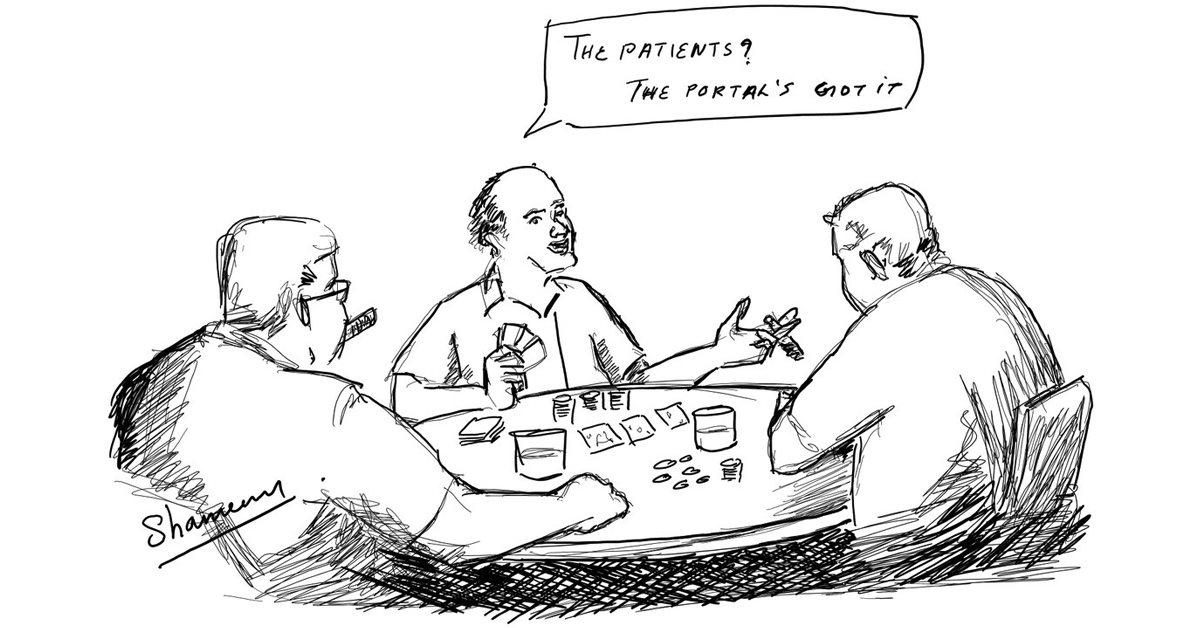
Stage 3 of Meaningful Use, more than 25% of a healthcare provider’s patients must actively engage with their electronic health records, presumably via a patient portal in most cases. Many of the inefficiency problems plaguing doctors and hospitals will allegedly be solved with the help of patient portals, as they’ll serve to organize data, facilitate communication, decrease costs, and, perhaps most importantly, contribute to increased patient engagement.
Given all the buzz around patient portals, it may be easy for providers to fall back on them as a quick fix for multiple issues. But how much can we really rely on portals to effectively engage patients? What should the true goal of a patient portal be? And, are there scenarios where use of a portal could actually detract from a patient’s experience rather than enhance it?
A closer look at patient engagement
According to research firm HIMSS Analytics, the term patient engagement refers to ‘an organization’s strategy to get patients involved in actively and knowledgeably managing their own health and wellness and that of family members and others for whom they have responsibility.’ Whether due to an overly complicated system, a lack of sufficient access to information, or other reasons, a large percentage of American patients simply do not take an active role in their own healthcare. However, links between increased patient engagement and better clinical outcomes are clear.
How can patient portals help?
There are a few key metrics providers should consider when implementing a patient portal. Portals that emphasize the following features are more likely to engage patients and decrease costs.
- Interoperability: One of the more frustrating circumstances of our healthcare system is a lack of information sharing between practitioners. Either two different physicians have to repeat the same procedures and tests on a patient, or the patient needs to spend far too much time on the phone requesting copies of data and records. A patient is less likely to want to engage with a patient portal if that portal is just one of many that he or she will have to become familiar with. Why bother learning to use a portal if the next doctor is going to have you learn an entirely different one? It’s too much to worry about in a culture that’s already notoriously short on time. A portal that integrates seamlessly across various platforms, however, is more likely to get patients to invest some effort and engage with their care.
- Transparency: Lack of transparency is an issue perhaps even more frustrating to patients than interoperability. How often do physicians take the time to thoroughly explain a procedure or condition to a patient? How many Americans have received a huge doctor or hospital bill in the mail and had no idea where most of the charge came from? Patient portals should promote transparency in our healthcare system. They should serve as a hub of information, with details specific to each patient as well as general literature that can help patients feel informed and confident.
- Communication: Getting a hold of one’s physician can be difficult. Doctors are busy and often overbooked, short on time even with patients who are in the office. Patient portals should serve as an avenue of clear, efficient communication, decreasing the need for faxes, missed calls, voicemails, and paper sharing. How simple to be able to log into an interface and see you doctor’s recommendations and tips, or to be able to send an email that your doctor will see and respond to within a few hours. If it will save them from having to wait on the phone or use outdated technology to communicate with their providers, patients will be more willing to engage with portals.
Limitations
Patient portals can bring many positive changes to the healthcare space, but providers can’t rely solely on them to increase patient engagement. In fact, recent studies have shown that many patients are dissatisfied with portals and don’t feel they’re adding value. When might portals have a negative effect, leaving patients annoyed or confused? Imagine visiting your doctor after feeling ill for some time, then logging into a portal the following week only to see a fatal diagnosis pop up on the screen. You’d likely feel angry and helpless, and all you’d have to help you is the words on the screen. Human compassion can’t be replicated by a computer program, no matter how sophisticated the program is.
Healthcare providers must take the time to discern between appropriate portal use and those situations where direct interaction is the best way to go. While solutions such as the blueEHR patient portal can get providers on the right track, it’s important not to dismiss continued efforts at patient engagement across the entire continuum of care.